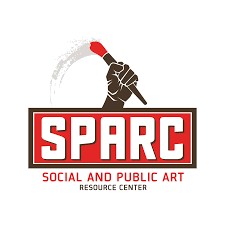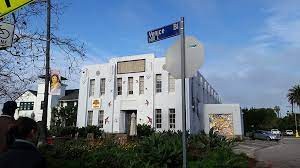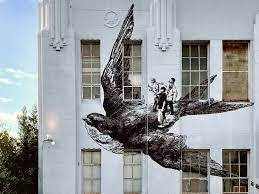Social Public Art Resource Center (SPARC)
Introduction
Text-to-speech Audio
The Social and Public Art Resource Center (SPARC) is a non-profit community arts center based in Venice, California. SPARC hosts exhibitions, sponsors workshops and murals, and lobbies for the preservation of Los Angeles area murals and other works of public art. SPARC hosts several community programs and artist spaces, including the UCLA@SPARC Digital Mural Lab, a "comprehensive" archive, printmaking studios, an art gallery and a University of California, Los Angeles (UCLA) graduate program. According to its mission statement, "SPARC espouses public art as an organizing tool for addressing contemporary issues, fostering cross-cultural understanding and promoting civic dialogue."
Images
The story behind Social Public Art Resource Center (SPARC)



Backstory and Context
Text-to-speech Audio
The building SPARC inhabits today used to be the old Venice Police Station, but it hasn’t been an active station since the seventies. For the past forty years, something very different has gone on behind its doors.
Inside, the bones of the old Police Station remain mostly intact. The worn wood frame of the front intake desk and solid bars of old jail cells still tower from floor to ceiling. The decor, frozen in time, belies the future forward thinking movement that now graces the space.
It has said that they have “liberated” the space for the arts. It houses our Mural Resource and Education Center, our SPARC gallery, the UCLA/SPARC Cesar Chavez Digital Mural Lab, the Judy Baca Archive, the Minna Agins Collection, darkroom and etching facilities as well as creative spaces for working professionals.
SPARC is best known for a half a mile long mural in the Tujunga Flood Control Channel of the San Fernando Valley called The Great Wall of Los Angeles. It is one of the country’s most respected and largest monuments to inter-racial harmony and “the longest mural in the world” , said Raif.
The Great Wall depicts the history of ethnic people in California from prehistoric times to the 1950’s. Conceived by Baca, painting began in 1974 and continued over five summers. To get the job done, SPARC employed over 400 youth and their families from diverse social and economic backgrounds to work with artists, oral historians, ethnologists, scholars, and hundreds of community members.
Cite This Entry
Santos, Eduardo. "Social Public Art Resource Center (SPARC)." Clio: Your Guide to History. December 13, 2023. Accessed March 19, 2025. https://theclio.com/entry/176404
Sources
https://yovenice.com/2017/03/31/the-sparc-in-venice/
https://sparcinla.org/building-history/#:~:text=The%20SPARC%20building%2C%20formerly%20The,the%20space%20for%20the%20arts.
https://sparcinla.org/about-sparc/#:~:text=SPARC's%20headquarters%20in%20the%2010%2C000,work%20of%20children%20and%20youth.
https://www.google.com/search?sca_esv=588087316&rlz=1CAIFNA_enUS1080&q=about+sparc+venice&tbm=isch&source=lnms&sa=X&ved=2ahUKEwj3ydTs8viCAxU0HEQIHTQIBfwQ0pQJegQIDRAB&biw=1366&bih=612&dpr=1&safe=active&ssui=on#imgrc=1E5RMv3MjB_1rM

